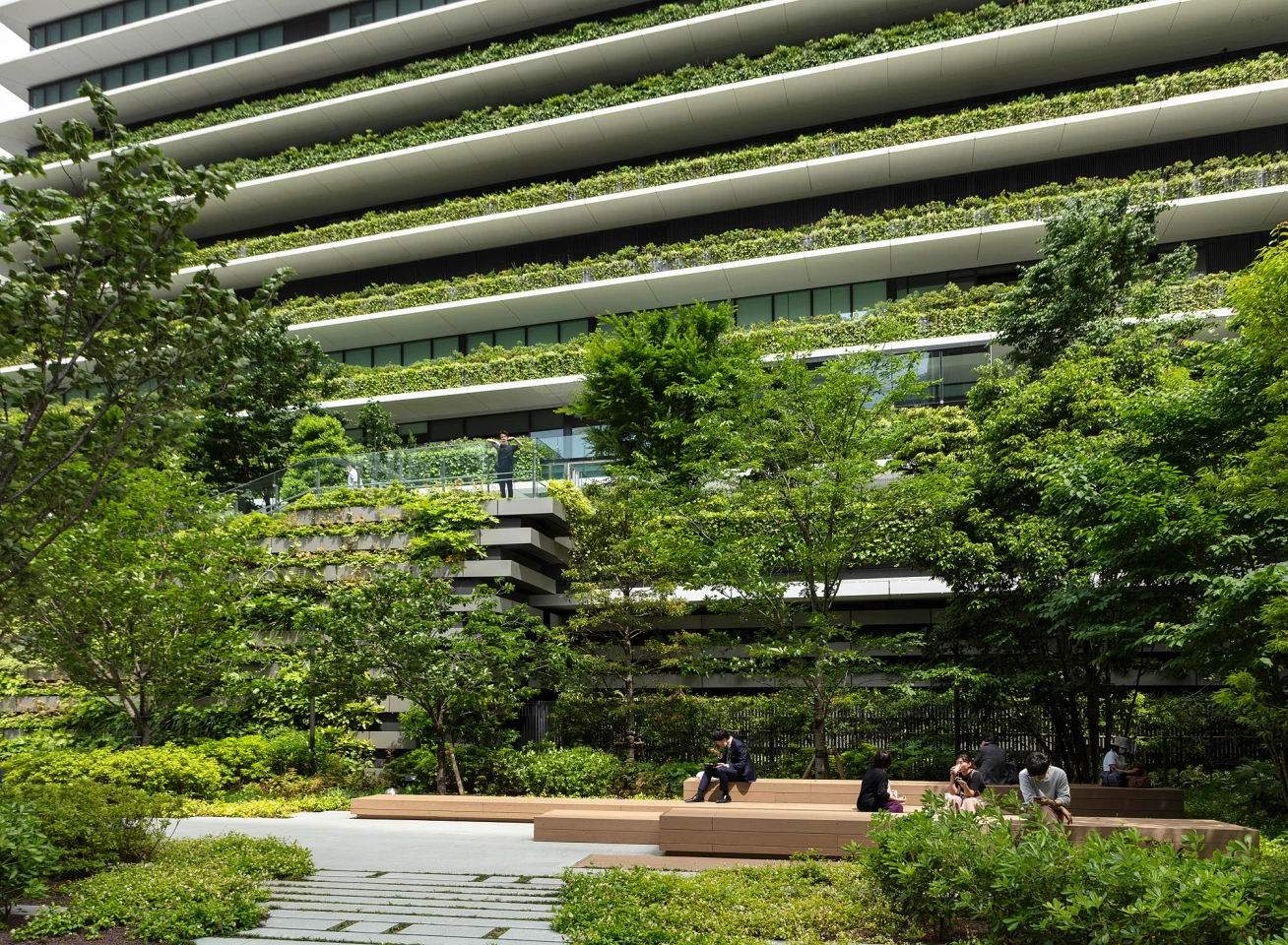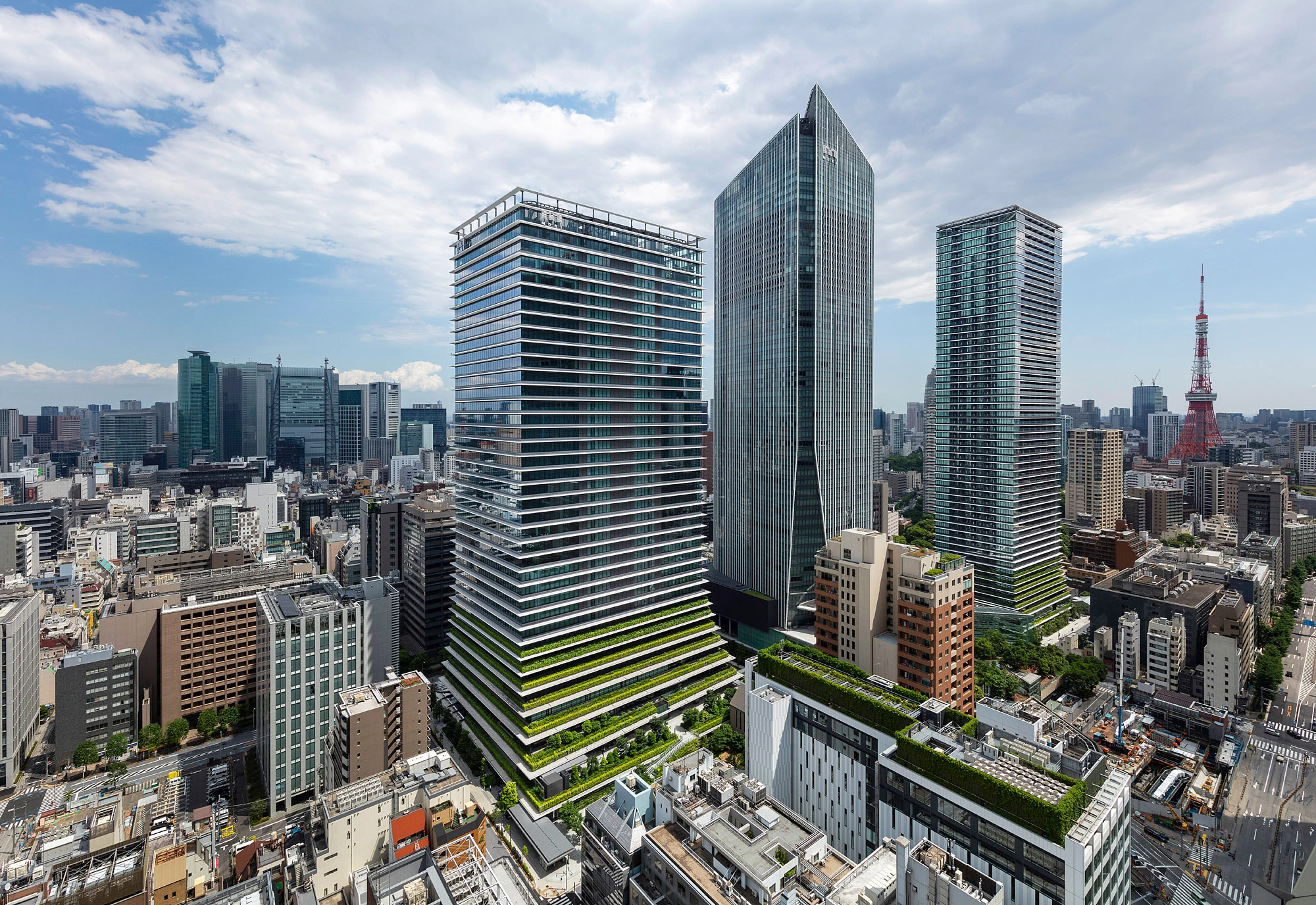Some six years after construction began, Germany's Ingenhoven Associates has finally completed work on a pair of skyscrapers in Tokyo. Featuring a bottom-heavy design enlivened by lush greenery, the tallest of the two towers is also Japan's tallest residential skyscraper.
The project is named Toranomon and involved situating the two new towers either side of the existing Toranomon Hills Tower, which is currently considered Tokyo's tallest skyscraper and the fifth-tallest in Japan. However, to complicate things, another tower nearby, the Toranomon-Azabudai Project Building A, is almost complete and will then be the country's tallest overall skyscraper.
The taller of the two new skyscrapers reaches a height of 220 m (721 ft) and contains 54 floors and 550 residential units ranging from 34 sq m (365 sq ft) studio apartments to two-bedroom residences measuring up to 112 sq m (1,202 sq m). The other Toranomon building is 185 m (606 ft) tall and hosts 36 floors of office space.
The skyscrapers are constructed from steel reinforced concrete and their tapering overall form is likened to ancient temple buildings and is meant to help mitigate the effects of earthquakes and typhoons. This is combined with dampers to reduce vibrations.

The buildings are linked by a large publicly accessible terrace area, which is home to lots of shrubs, plants, and trees, and continues vertically up to floor seven on the office tower and floor 11 residential tower. There are also multiple seating areas and walkways. The total greenery measures around 7,800 sq m (roughly 84,000 sq ft) and continues Ingenhoven Associates' ongoing efforts to add significant greenery to its projects.
"With the vertical garden city, Ingenhoven Associates continue their intensive engagement with urban greenery and the search for site-specific answers in different climates around the world," said the firm. "As evidenced by projects such as Toranomon, Marina One in Singapore (2018), whose green heart returns 125 percent of the site area to the city in green space, and Kö-Bogen II in Düsseldorf, they are guided by their supergreen principles – a holistic system of insights and requirements for future-forward construction, that is continuously evolving and exceeds the highest green building standards wherever possible."
Sources: Ingenhoven Associates, Mori








